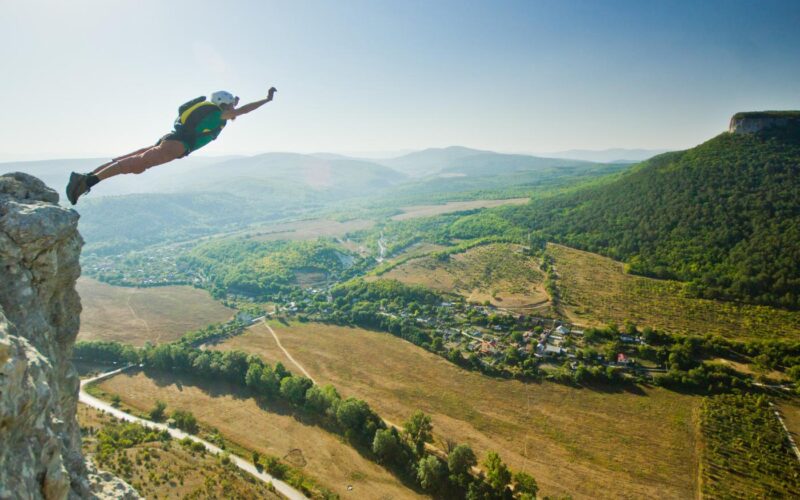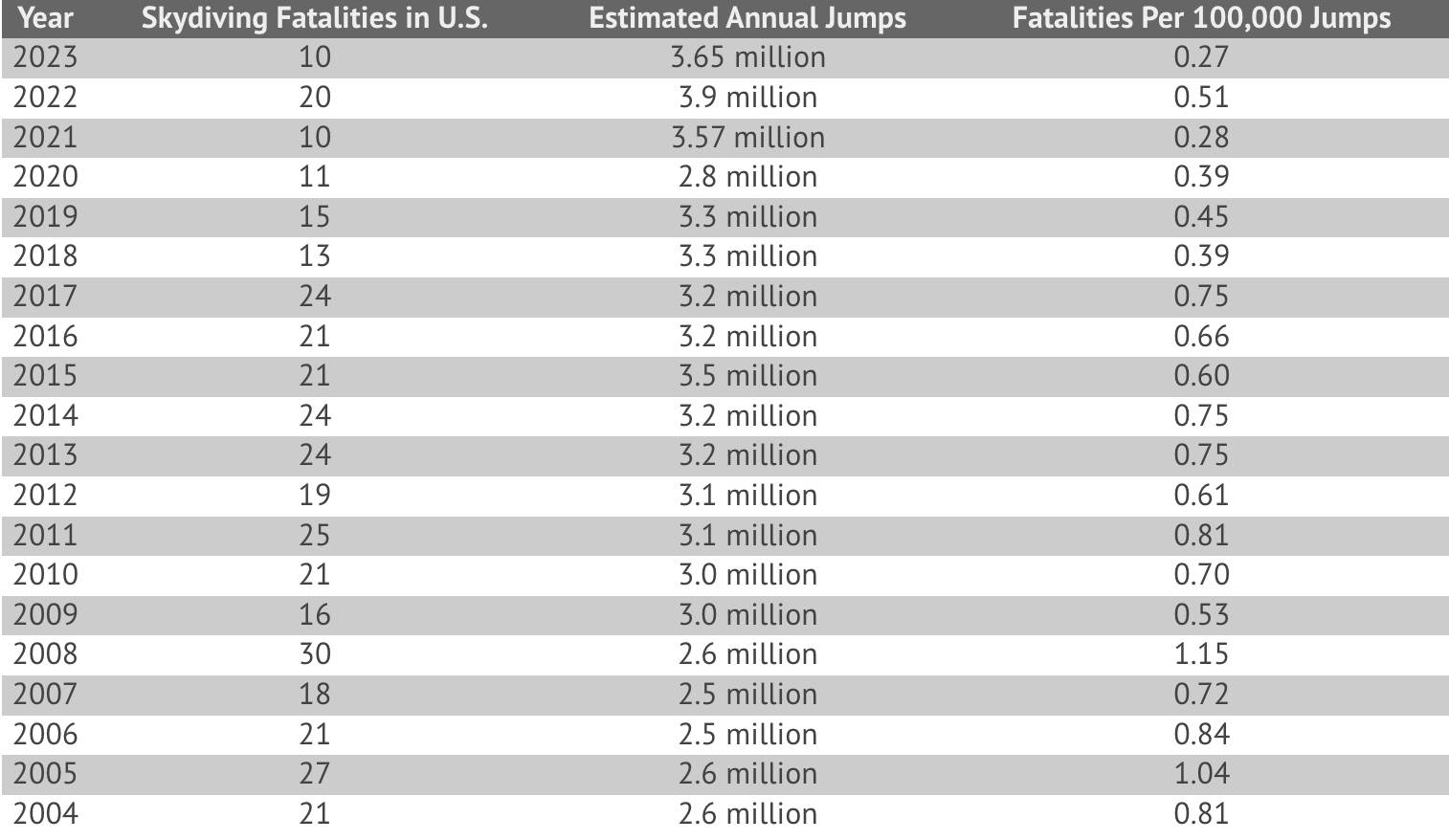BASE Jumping
Base Jumping VS Skydiving: What’s the Difference?
Two sports cut from the same cloth, but how do they really stack up to each other?

BASE jumping and skydiving might seem like the same thing, but while there are some similarities between the two, the preparation, equipment, experience, and risks involved couldn’t be further apart.
What’s the difference between BASE jumping and skydiving?
Skydiving involves jumping from an aircraft at high altitudes, typically between 10,000 to 14,000 feet. After a freefall period, the parachute is deployed, allowing the jumper to glide to the ground.
BASE Jumping, on the other hand, involves jumping from fixed objects such as Buildings, Antennas, Spans (bridges), and Earth (cliffs), hence the name BASE. It occurs at much lower altitudes, ranging from a few hundred feet to about 1,000 feet.
Key Differences:
- Altitude: Skydiving jumps are done from much higher altitudes compared to base jumping.
- Jump Points: Skydiving is almost always done from moving aircrafts and the odd hot-air balloon; base jumping is from fixed objects.
- Freefall Time: The freefall time in skydiving is much longer due to higher altitudes.
- Equipment: No reserve parachute with BASE jumping. It’s all or nothing!
Equipment and Safety of BASE Jumping VS Skydiving
Apart from the obvious matter of altitude, equipment and safety is where the two sports differ massively. Both BASE jumping and skydiving might be considered to be activities for adrenaline junkies but BASE jumping is far and large the more risky of the two and not for the faint hearted.
With skydiving you’ll be packing a main parachute, a reserve parachute, an automatic activation device (AAD), and an altimeter to almost completely guarantee a safe landing. With BASE jumping you’re jumping from such a low altitude that there wouldn’t be enough time to deploy a reserve chute so you’ve got one shot for it to work out.
And since you’re starting out pretty close to the ground (relatively speaking) you’ll be using your eyes to decide when to deploy your parachute instead of an altimeter, leaving more room for human error.
When it comes to safety, skydiving has more rules than a corporate retreat, thanks to the United States Parachute Association (USPA) and their strict regulations on training and equipment upkeep. In contrast, BASE jumping operates like the wild child of the sky, with no governing body or standardized training—just you, a parachute, and a whole lot of guts!
Skydiving Equipment:
- Parachute System: Consists of a main parachute, a reserve parachute, and an automatic activation device (AAD) for safety.
- Jumpsuit and Helmet: These provide protection against wind chill and minor impacts.
- Altimeter: A crucial device to monitor altitude and ensure timely deployment of the parachute.
BASE Jumping Equipment:
- Parachute System: Generally includes only one parachute, designed to open quickly due to the low altitude.
- Protective Gear: Helmet, and if you’re feeling adventurous, throw on a wingsuit for that superhero vibe.
- Tracking Devices: For remote BASE jumps, sometimes jumpers will use tracking devices to make sure they can be found in case of an emergency.
Is BASE Jumping more Dangerous Than Skydiving?
Yes. It really is as simple as that. With BASE jumping you’ve got one shot to get it right with no room for error. Skydiving’s safety equipment and regulated training make it a much safer option.
According to the USPA, the fatality rate for skydiving in the United States is approximately 0.27 per 100,000 jumps. Find out more about the safety of skydiving here.
BASE jumping, on the other hand, has limited data due to the lack of regulation, but one study shows that the sport could have fatality rate as high as 40 per 100,000 jumps.

How to Get Into BASE Jumping
Now you know the risks involved, let’s talk about the “safest” way to get into BASE jumping. And by safest, we mean the least risk involved with an inherently risky sport.
- Become the best skydiver you possibly can: People skip this step more often than they should. Skydiving is a great way for you to learn how to control your body in freefall and maybe even more importantly, how to control your canopy in a much safer environment. Take an AFF course at your local skydiving center (dropzone) and aim to make 150-250 skydives or more.
- Find a First Jump Course: Search around for a reputable BASE jumping course.
- Become a part of the BASE community: Get involved in the BASE community and meet folks who can help kickstart your career safely. Be ready to ‘Ground-crew’ for local BASE jumpers, which might mean helping with setups, driving, or offering other support.
- Train, train, train: BASE jumping is NOT like riding a bycicle. You need to hone your skills and practice as much as possible. Keep doing regular skydives and consider indoor skydiving to train your freefall skills.
For now, don’t get ahead of yourself… find a skydiving center near you and try your first tandem jump.
Published: September 6, 2024 | Last Updated: September 6, 2024
Don’t miss an update!
Join our mailing list for the latest indoor skydiving updates delivered directly to your inbox.
